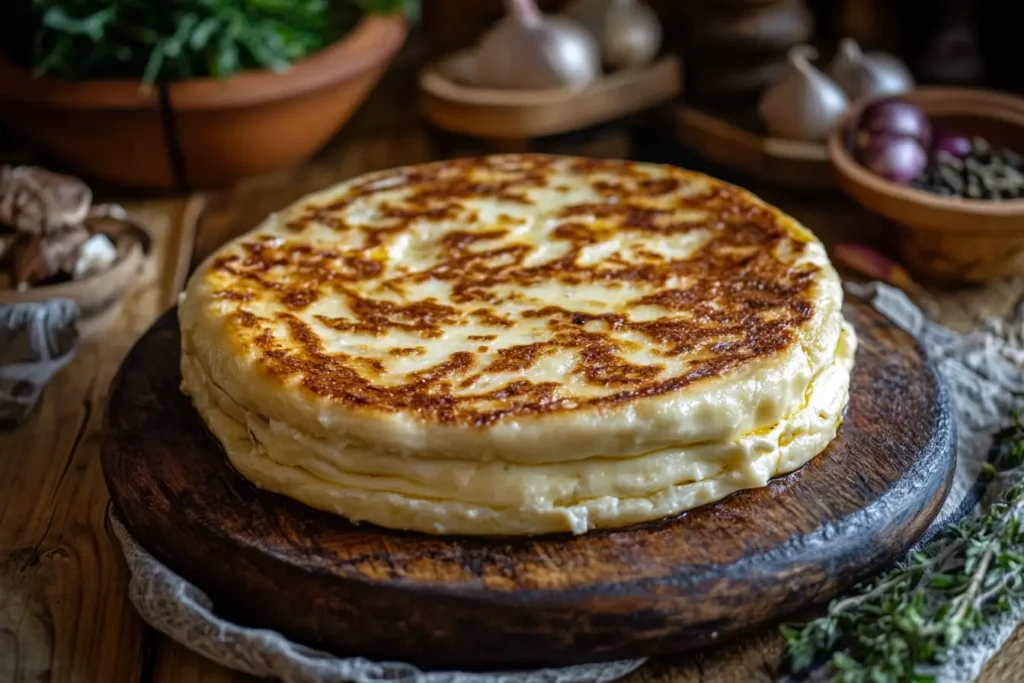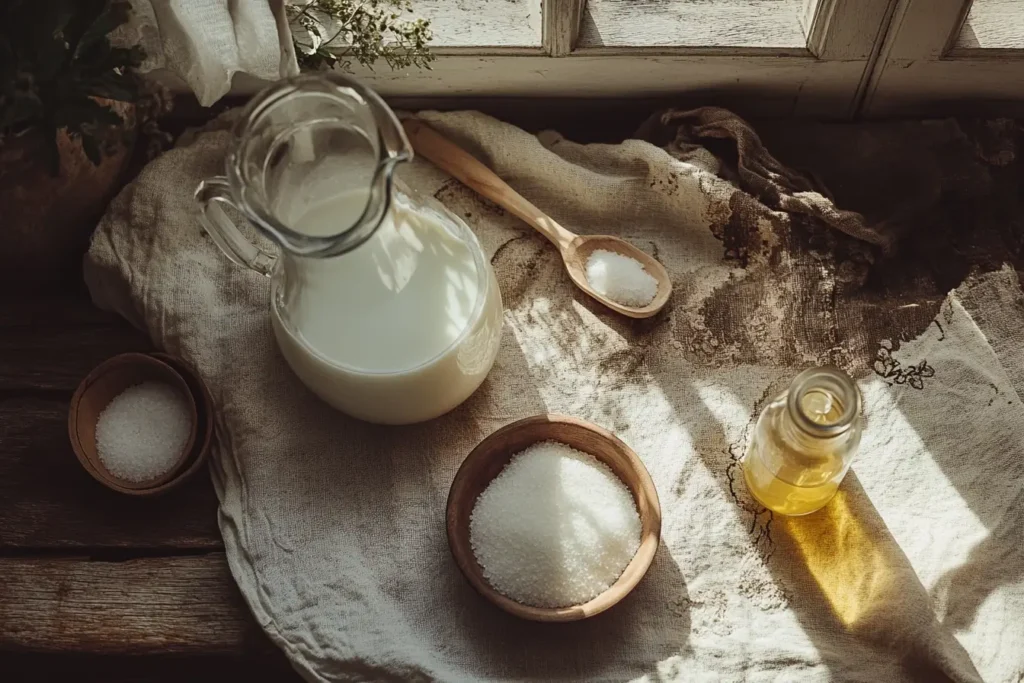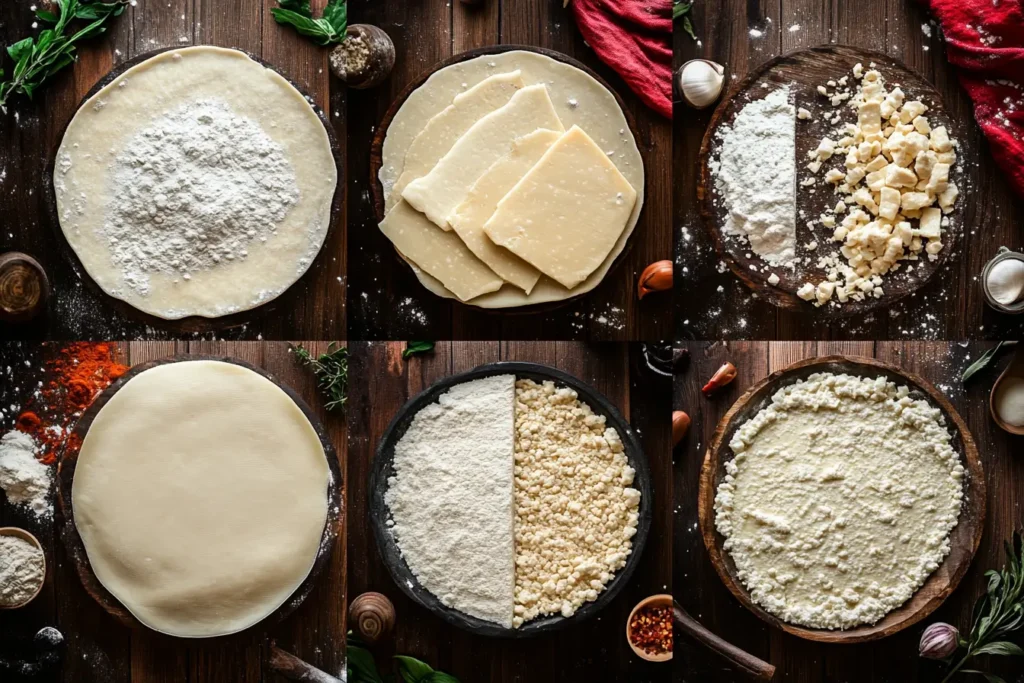If you’ve ever indulged in the wonders of Mexican cuisine, you’ve likely encountered the creamy, stringy delight of quesillo cheese. Often referred to as “Oaxaca cheese,” quesillo is a staple in traditional dishes and a culinary treasure that embodies the flavors of its region. Its smooth texture, mild flavor, and melt-in-your-mouth quality make it a versatile ingredient for countless recipes.
But what exactly is quesillo cheese? How is it made, and what sets it apart from other cheeses? In this article, we’ll unravel the secrets of quesillo cheese, explore its history, dive into its culinary uses, and even provide tips on how to make it yourself.

Table of Contents
The Origins of quesillo cheese
The Birthplace of quesillo cheese
Quesillo originated in Oaxaca, Mexico, a state celebrated for its rich culinary traditions and artisanal food products. This cheese came to life through a happy accident. According to legend, a young cheesemaker mistakenly overheated milk curds, leading to a pliable, stringy cheese instead of the crumbly variety she intended. What might have been a disaster became an innovation, giving birth to quesillo as we know it.
Cultural Importance in Mexican Cuisine
Quesillo is more than just cheese in Oaxaca—it’s a cultural icon. It features prominently in beloved dishes like tlayudas (a type of Mexican pizza), enchiladas, and tamales. It’s often sold in long, coiled strands at local markets, symbolizing artisanal craftsmanship and the culinary pride of the region.
How quesillo cheese is Made
Traditional Techniques in Quesillo Production
Making quesillo is an intricate process that balances art and science. The production begins with fresh milk, usually from cows, though goat milk is also occasionally used. The milk is curdled, then heated to just the right temperature to form pliable curds. These curds are stretched and kneaded into long, smooth strands before being coiled into a ball.
Ingredients and Tools
To make authentic quesillo, the following ingredients and tools are essential:
- Fresh cow’s milk (preferably raw)
- Rennet or a natural acid to curdle the milk
- A large pot and wooden spoon for stirring
- Warm water for the stretching process
Unique Stringy Texture: The Process Explained
What sets quesillo apart is its stringy texture, achieved through a process called pasta filata. After the curds form, they’re stretched repeatedly in hot water. This step aligns the proteins, creating the cheese’s signature pull-apart quality. The result? A texture that’s perfect for melting, wrapping, or simply enjoying as is.

Types of Quesillo Cheese
Regional Variations
While quesillo originated in Oaxaca, its popularity has spread across Mexico and beyond, inspiring regional variations. In its purest form, quesillo is made from cow’s milk, but some areas experiment with goat’s milk for a tangier flavor. The coiling process and texture remain consistent, but subtle differences in taste and aroma often reflect the milk source and local production methods.
Differences Between quesillo cheese and Other Cheeses
It’s easy to confuse quesillo with similar cheeses, especially mozzarella or other melting varieties. However, quesillo has distinct characteristics:
- Texture: Quesillo’s stringy texture sets it apart, whereas mozzarella has a softer, less elastic structure.
- Flavor: Quesillo offers a buttery, slightly salty taste, unlike the more neutral profile of mozzarella.
- Appearance: Sold in long, coiled strands, quesillo’s presentation is unique compared to the block or ball form of mozzarella.
Nutritional Value
Macronutrients in quesillo cheese
Quesillo is not just delicious—it also packs a nutritional punch. A typical serving provides:
- Protein: Essential for muscle repair and growth, quesillo is rich in high-quality protein.
- Fats: It contains healthy fats that provide energy and support cell function.
- Calcium: As a dairy product, quesillo is a great source of calcium, promoting strong bones and teeth.
Here’s a snapshot of the average nutritional content per 100 grams:
- Calories: 300
- Protein: 22g
- Fat: 24g
- Calcium: 700mg
Is quesillo cheese Healthy?
While quesillo can be part of a balanced diet, moderation is key. Its high fat and sodium content means it’s best enjoyed as an occasional treat rather than a daily staple. For those following a low-carb or ketogenic diet, quesillo can be a satisfying option due to its low carbohydrate content.
Popular Uses in Cooking
Quesillo in Mexican Dishes: Tacos, Quesadillas, and More
Quesillo shines as the star ingredient in many Mexican dishes. Its ability to melt perfectly makes it ideal for:
- Quesadillas: Where its gooey texture steals the show.
- Tlayudas: A crispy Oaxacan specialty topped with beans, meats, and melted quesillo.
- Tacos: Often used as a topping to add creaminess to savory fillings.
Fusion Recipes Featuring Quesillo
Chefs worldwide are incorporating quesillo into creative recipes. Imagine quesillo-topped pizzas, grilled quesillo sandwiches, or even quesillo-stuffed burgers. Its mild flavor pairs beautifully with bold spices, making it a versatile ingredient in fusion cuisine.
Melting Properties and How to Use Them
Quesillo’s melting qualities are unmatched, forming a smooth, stretchy layer when heated. To achieve the best results:
- Low Heat: Melt quesillo slowly to prevent clumping.
- Shredded Strands: Pull it apart into thin strands for even melting.
- Combine with Liquid: Add a splash of milk or cream to create a silky cheese sauce.
How to Store Quesillo
Ideal Conditions for Freshness
Proper storage is crucial for maintaining the quality and flavor of quesillo. Here’s how to keep it fresh:
- Refrigeration: Always store quesillo in the refrigerator, ideally between 34°F to 40°F (1°C to 4°C).
- Wrapping: Use parchment paper or plastic wrap to cover the cheese. Avoid airtight containers, as quesillo needs slight airflow to prevent excess moisture buildup.
- Avoid Freezing: Freezing can alter the texture and flavor of quesillo, turning its creamy, stringy consistency into a crumbly mess.
Tips to Prolong Shelf Life
- Use Brine: Submerging quesillo in lightly salted water can help it stay fresh longer, particularly for homemade or artisanal varieties.
- Check for Spoilage: Discard quesillo if it develops a sour smell, mold (beyond natural spots), or an off flavor.
- Consume Quickly: For the best taste and texture, consume quesillo within 5-7 days of purchase.
Buying Quesillo
Where to Find Authentic Quesillo Cheese
Quesillo is widely available in Mexican grocery stores and specialty markets. To ensure authenticity:
- Look for labels indicating “Oaxaca cheese” or “quesillo”.
- Opt for brands that specify artisanal or hand-crafted production.
In regions without access to Mexican markets, some online retailers ship authentic quesillo cheese. Just ensure proper shipping conditions to maintain freshness.
Recognizing Quality Quesillo
High-quality quesillo has several tell-tale signs:
- Texture: It should feel firm yet pliable, with no dryness or excessive moisture.
- Color: A creamy white hue is standard, free from yellowing.
- Taste: Authentic quesillo has a mild, slightly salty flavor with a rich buttery note.
When in doubt, ask your local vendor for recommendations or taste-test to find your preferred brand.
Comparison with Similar Cheeses
Mozzarella vs. Quesillo
Mozzarella and quesillo often draw comparisons, but the differences are significant:
- Origin: Mozzarella hails from Italy, while quesillo is rooted in Mexico.
- Production: Mozzarella has a simpler stretching process, whereas quesillo’s unique coiling technique gives it a layered, stringy structure.
- Taste and Use: Mozzarella is neutral and creamy, ideal for Italian dishes, while quesillo’s slightly salty, buttery flavor complements bold Mexican spices.
Oaxaca Cheese vs. Quesillo
Technically, quesillo and Oaxaca cheese are the same product, but regional terminologies differ. “Oaxaca cheese” is the term most often used in English-speaking countries, while “quesillo” remains the authentic name in Mexico.
Key takeaway: If you see Oaxaca cheese on a label, you’re likely getting quesillo—but check for coiled presentation to confirm.
Quesillo Around the World
How Other Countries Interpret and Use Quesillo
As quesillo’s fame spreads, chefs and home cooks worldwide are incorporating it into their cuisines. In the U.S., it’s often featured in Tex-Mex dishes like cheesy enchiladas. In fusion recipes, quesillo replaces mozzarella in recipes like lasagna, while its melting properties are explored in grilled sandwiches, casseroles, and more.
Countries with large Latin American populations have embraced quesillo as a beloved cheese, adapting it into regional specialties and showcasing its versatility.
Making Quesillo at Home
Step-by-Step Recipe for Homemade Quesillo
Love homemade cheese? Here’s a simple quesillo cheese recipe you can try at home!
Ingredients:
- 1 gallon fresh whole milk
- 1 tsp salt
- 1/2 tsp liquid rennet (or 2 tbsp vinegar)
- 1/2 cup warm water
Instructions:
- Heat the milk to 90°F (32°C) in a large pot.
- Stir in rennet or vinegar and let it sit for 30 minutes until curds form.
- Cut the curds into cubes and heat to 105°F (40°C) while stirring.
- Drain the curds and knead in hot water until stretchy.
- Roll into a ball and let it cool in cold water before storing.
Prep Time: 15 mins
Cooking Time: 30 mins
Total Time: 45 mins
Calories: ~80 per ounce
Servings: ~10

Frequently Asked Questions
What’s the Best Way to Melt Quesillo?
For the best melting results:
- Shred quesillo into thin strands.
- Heat it slowly over low to medium heat.
- Add a splash of milk or cream if creating a sauce to maintain a smooth texture.
Can You Freeze Quesillo?
While freezing is not ideal, it’s possible. Wrap the quesillo tightly in plastic wrap and place it in a freezer-safe bag. Thaw it in the refrigerator and use it in cooked dishes, as the texture may change.
How Long Does Quesillo Last?
Stored properly in the refrigerator, quesillo stays fresh for up to 7 days. For artisanal quesillo, aim to consume it within 3-5 days for the best flavor.
Is Quesillo Lactose-Free?
No, quesillo is not lactose-free. However, it may contain lower levels of lactose than milk due to the cheesemaking process. Those with lactose intolerance should consume it cautiously.
Can You Use Quesillo in Non-Mexican Recipes?
Absolutely! Quesillo’s versatility allows it to substitute for mozzarella in dishes like pizza, lasagna, or grilled cheese sandwiches, adding a unique twist to classic recipes.
What’s the Difference Between Quesillo and Queso Fresco?
Quesillo is stringy and ideal for melting, while queso fresco is crumbly and best used as a topping. Both are Mexican cheeses but serve different culinary purposes.
Quesillo cheese is a versatile ingredient celebrated for its creamy texture and mild flavor, perfect for enhancing traditional dishes or adding a unique touch to modern recipes. Pair it with protein-packed mac and cheese for a healthy twist to elevate comfort food with a gourmet flair. For a sweet contrast, consider serving quesillo cheese alongside fresh strawberries and cream as a delightful dessert option. You can also explore its role in Latin American cuisine, much like the vibrant flavors found in rolled tacos that celebrate culinary tradition.
Conclusion
Quesillo cheese is more than just a culinary ingredient; it’s a representation of Mexico’s rich heritage and artisanal craft. Its mild flavor, creamy texture, and versatility make it a favorite in kitchens worldwide. From traditional Mexican dishes like tlayudas and quesadillas to creative fusion recipes, quesillo proves its adaptability and universal appeal.
Whether you enjoy it melted in a dish, coiled fresh as a snack, or experiment with homemade recipes, quesillo deserves a spot in your kitchen. With proper storage tips, an understanding of its unique qualities, and knowledge of how to pair it with different cuisines, you’re ready to explore the delicious world of quesillo cheese.
